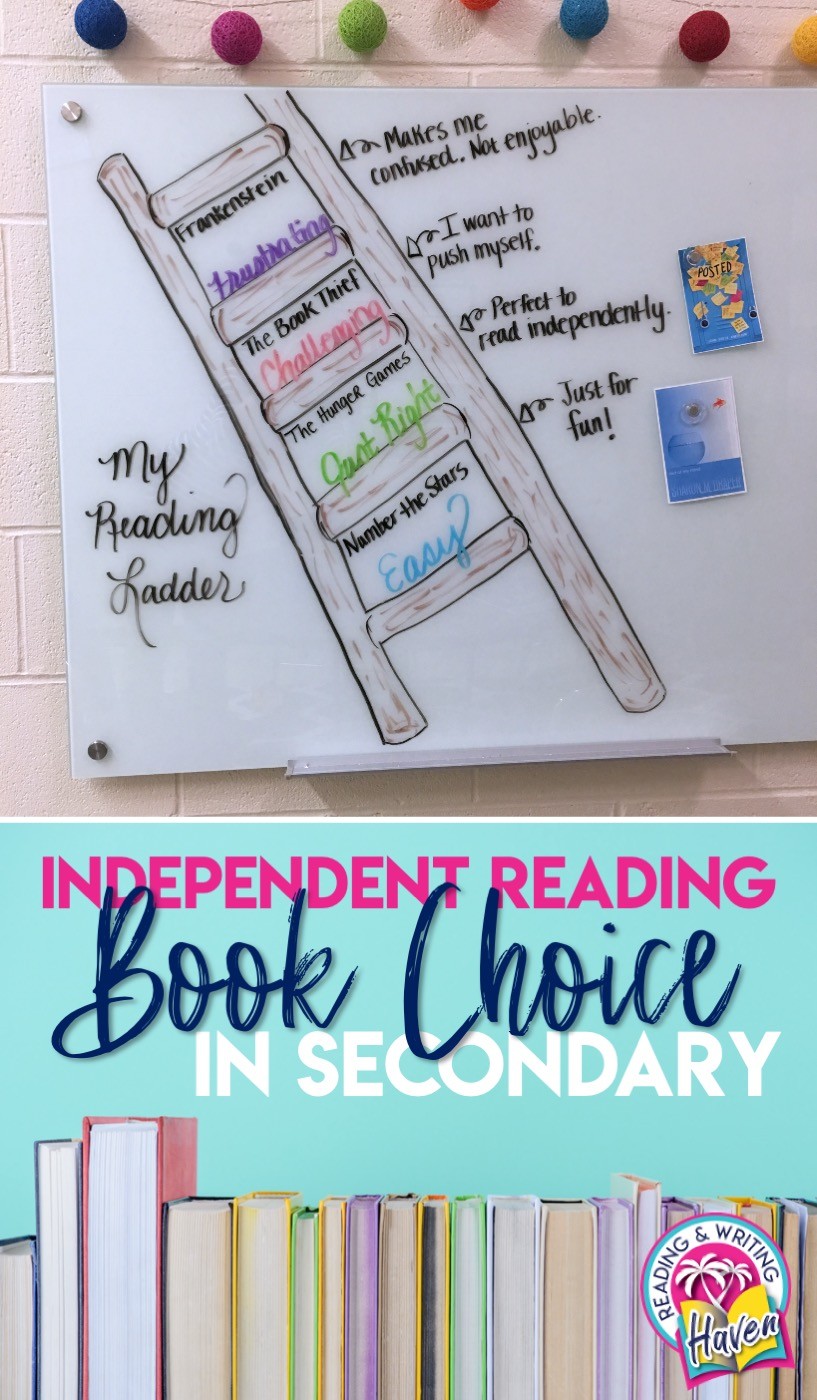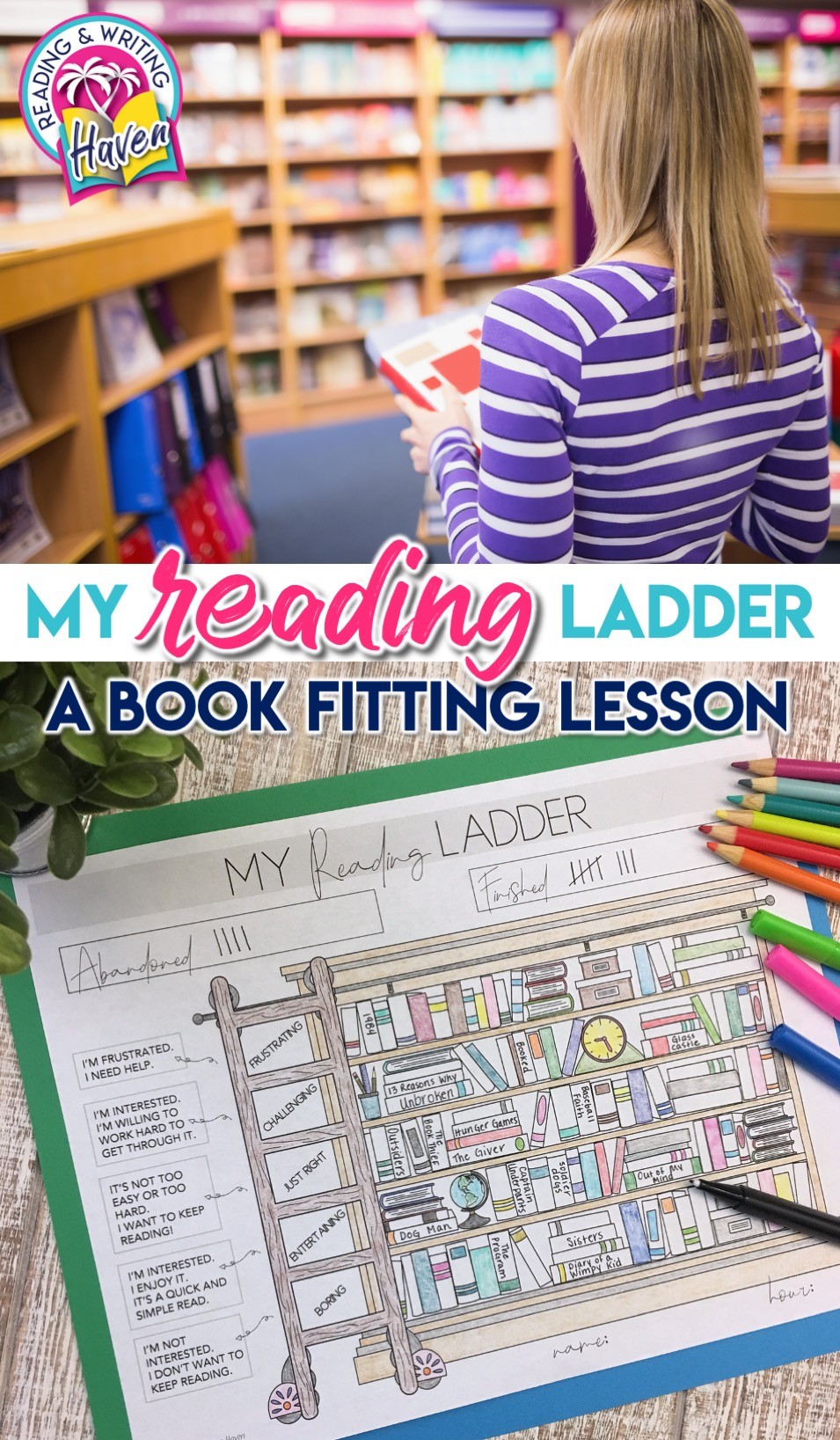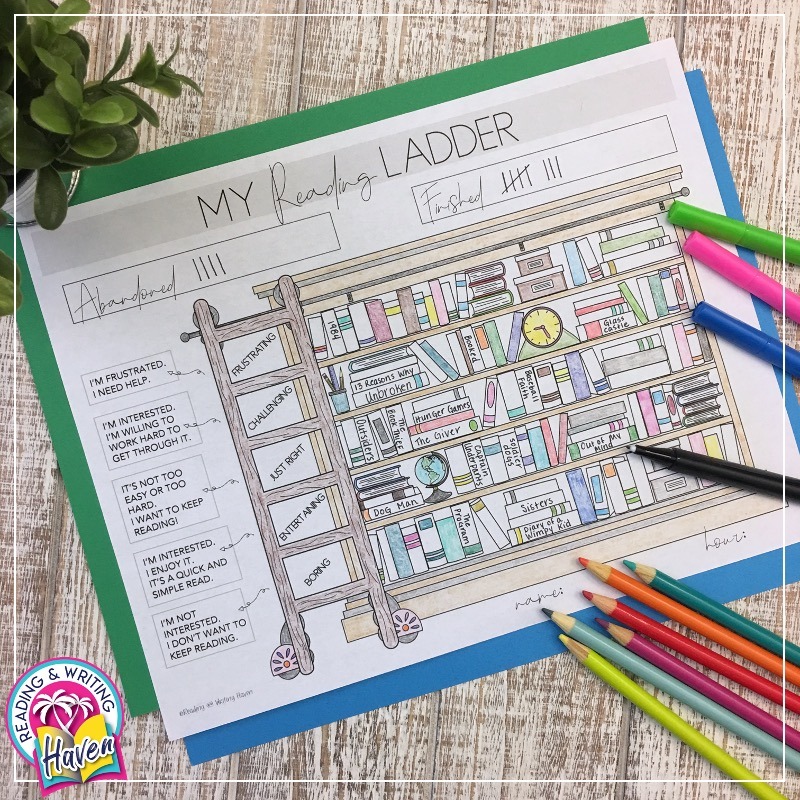Why Reading Levels Don’t Work in Secondary, and What to Do Instead
Google “reading levels,” and all sorts of things will come up. Leveled reading charts, assessments, parent guides, frameworks, you name it. For good reason, the concept of leveled texts can be a little confusing.
As a middle or high school teacher, I don’t pay much attention to letter-based reading levels. I find them to be restricting, and labeling students as a certain level is not always helpful. In fact, forcing a student to read a book just because it is a Z can be harmful.
Developing a students’ love for reading can be compared to caring for a fragile baby bird. We could do a lot of things to jeopardize that bird’s development. Or, we could teach it to fly.
I do believe students will grow more in their reading abilities during independent reading time if they are reading a book that is a good fit for them…one that they are engaged in, and one that they understand.
Because leveled texts don’t sit right with me, and because I work with older students, I want a way to have conversations with students to help them understand themselves better as readers. I’m not a huge fan of reading logs, and I despise Accelerated Reader. These tools are extrinsic motivators that either reward or punish students for completing a book.
When I think about asking students to read “just right books,” I think about empowering them by teaching them how to select a book they will both enjoy and understand. Students need choice! It’s non-negotiable.
Students need to understand themselves as readers…
Helping students to reflect on books they’ve read in the past is a good place to start. I like to think about reading complexity with a ladder metaphor.
When I think about books I’ve read, they generally fall into one of these categories. However, after talking with some of my middle school students, they felt there should be another rung below easy. They expressed that books can be easy but boring, which is different to them than easy and enjoyable.
Basically, this ladder helps students to think about books they select for themselves. We can model how we choose books by talking about how our reading experiences relate to the rungs. Students enjoy having these conversations. For example, this is the kind of discussion I would have with students:
Easy Books
Question: Can you think of a book you have read that you have both enjoyed and understood completely?
Me: When I read The Hunger Games, I loved it, and I completely comprehended it. In fact, there weren’t very many words in that story I didn’t know, and I had already read so many other dystopian novels that I had some pretty good background knowledge that helped prepare me for the plot. For this reason, I’d classify Hunger Games as “Easy.” That doesn’t mean I shouldn’t read it though, especially if I enjoyed it!
Question: What books have you read that you would classify as “easy”?
Students may respond that they enjoy picture books and graphic novels. Perfect! Others might say they don’t enjoy any books. That’s fine, too. Those are students you can work with closely to match them up with books that might engage them.
Sometimes, you’ll notice that the only books students mention are whole-class novels from previous grade levels, which is a good clue that those students might not be reading much on their own. All of this information is helpful to you, but it should never be used to make students feel bad about their reading history.
Just Right Books
Question: Do you ever do the five finger test with a book? Have you read one of the first pages and paid attention to how many words are new to you?
Me: A book like The Book Thief would be more of a Just Right book for me because I understood it, but there were some words I didn’t know right away. And, because it was told from the point of view of death, that was a twist I wasn’t used to. The book interested me, and I learned from it. It was fun to see how writers can use personification artfully.
Prompt for Students: Let’s talk about books you think are just right for you and why.
Students may, once again, claim they haven’t found any books that are just right for them. Don’t silence their voices. Capitalize on the opportunity to work with them. Reassure them that together, you will find books that are enjoyable and comprehendible.
If a seventh grade student says James and the Giant Peach is just right for him or her, keep in mind that 1) Maybe it is! or 2) Students may need some conferring time and additional modeling about books that are a good fit.
Boring and Frustrating Books
Me: When I was in college, I was supposed to read Harry Potter for one of my reading classes. That book wasn’t difficult for me at all, and it was oh so boring. I had no desire to finish it.
Also during this time, I took a seminar on Moby Dick. Honestly, that book was frustrating to me. It was way above my reading level, and I had zero interest in it or background knowledge for it. I needed help, and I wasn’t getting much of that from the professor who taught the course. I actually ended up dropping the class. It was just too much.
Question: Have you ever felt so frustrated by a book that you just want to stop reading it? What should we do if that happens?
Make sure students know that every reader gets bored and stuck. Just because they are disinterested or confused, they shouldn’t perceive they are “bad” at reading. Everyone is in the same boat.
This is the perfect opportunity to talk about abandoning books and asking for help. Teach students to be aware of their interests, including both topic and genre. Help them to identify similarities among books they enjoy and those they don’t. If a student insists they just hate reading, try this.
Challenging Books
Me: It is important for readers to persevere through books at times. Sometimes we are just really interested in reading something but need to do some extra leg work to make sure we understand. I typically shy away from nonfiction, but when I started reading Unbroken, the story lured me in. It had a lot of background about history that I looked up on my own to make sure I was understanding it. I also talked with my husband and friends about it. That book challenged me, but I loved every moment of reading it. I understood it, but it took some dedication on my part.
Likewise, when I read To Kill a Mockingbird for the first time, I had my smart phone in one hand and my book in the other. I looked up all of the allusions and idioms that I didn’t understand. It was interesting, but definitely slightly outside my comfort zone!
Questions: What books have made you feel this way? What specific genres or topics interest you enough that you’d want to read a book that requires extra research?
You may be surprised with students responses. This conversation will help you to notice similarities among your students. Maybe most of them enjoy dystopian literature or books about sports. This knowledge will help you to make relevant instructional choices.
Think about building reader identity…
Having these conversations is such an important element in building reader identity and awareness.
This metaphor makes sense to use with older students. It helps them to see how books they’ve read have challenged them in a good way, frustrated them to the point of not wanting to read, bored them to death, or engaged them enough to pick up another book.
The ladder creates an awareness, but it’s not a punishment. Students have freedom to move up and down the rungs, but there’s a comfort in knowing where they can return when books just don’t seem to suit them and where they will see the most growth in their own reading skills.
When students struggle with book choice…
There is always concern that even with guidance, students won’t know how to select a book that is just right for them. We can look at this issue a couple different ways. One, it’s okay! If a student is reading and engaged, that is a beautiful thing. And two, conferring with students about what they are reading is how we can help them to continue to understand themselves as readers and to make choices that set them up for success.
I would never tell a student he or she cannot read a book they love. It’s okay to recommend that the student read it at home or at least talk about the book with a parent. I’ve also referred the student to similar books that I think might fit him or her better. Ultimately, what matters most is enjoyment and frequency, so we need to do whatever we can to get books in students’ hands and keep them there.
If you’re interested in printable rungs and a brainstorming sheet, you can find mine here.
Want to know more? These are a few of my favorite reading posts from the web that entwine with my philosophy of teaching reading.
- Choice During Instructional Independent Reading – Jennifer Servallo
- On the Level – Donalynn Miller
- On Accelerated Reader and All the Other Computer Programs – Pernille Ripp
- How to Stop Killing the Love for Reading – Cult of Pedagogy
RELATED RESOURCE:
Help students to develop an awareness of what books make them want to keep reading using My Reading Ladder. You can also find the digital bookshelf version here!


